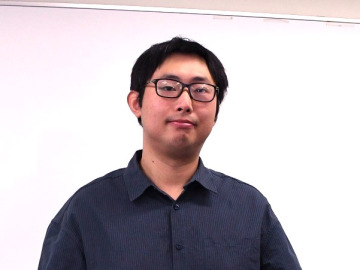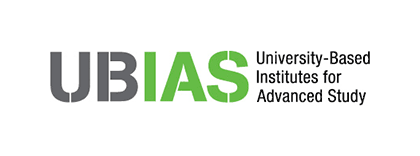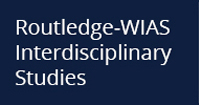
- Masashi Abe, Assistant Professor (September, 2015)
Excavation Experience That Brought Me into Archaeology
I am an archaeologist specializing in Middle Eastern archaeology. The focus of my research is the origins of agriculture in the Middle East. I am also studying the ancient kingdom of Dilmun, which existed in Bahrain, and the protection of cultural heritage in Syria.
What made me interested in archaeology was an excavation project I participated in as an undergraduate student. Since I was a small child, I had an interest in history in general, without a preference for Eastern or European. In university, however, I had to choose my specialty field of research, but had trouble making up my mind about which age or region. At that time, I had the opportunity to take part in an excavation project of Jomon ruins in Yamanashi Prefecture, where I dug the artifacts out of the ground with my hands, and actually touched pottery used by the ancient people. This experience showed me that archaeology was interesting and worthwhile, and therefore I decided to start to study it as my specialty.
My Encounter with Middle Eastern Archaeology
After I decided to specialize in archaeology, I started working part time at a university museum to improve my knowledge. The supervisor at the museum was a professor who specialized in Middle Eastern archaeology, and he was a great help for me. He taught me about Middle Eastern archaeology, and in my junior year, he gave me the opportunity to attend his excavation research in Syria. Under his tutelage, I decided to specialize in Middle Eastern archaeology as well.
Later, in my doctoral program, I left Japan and went to the University of Liverpool in England. As Liverpool is a port city, there remain valuable archaeological resources from Egypt and the Middle East, making it an ideal study environment for me. Although I took me a while to get used to the language, my research today still utilizes the network I built back then with the local archaeologists.
The Fertile Crescent and Agriculture
Past research has generally held that the birthplace of cultivation of wheat and breeding of sheep and goats is the Fertile Crescent in the Middle East. In academia, however, there are divided views as to where in this spacious Fertile Crescent region (divided into the Levant area in the west and the Zagros area in the east) it was that agriculture actually originated.

Figure 1: The Fertile Crescent (Courtesy of Assistant Professor Masashi Abe)
The archaeologist G. Childe was the first to point out the importance of unveiling the origin of agriculture. At first, the origin was thought to be the Nile or Mesopotamia.
It was R. Braidwood who expressed disagreement with this trend. He advocated the theory that the first agriculture should have started in a land where wild wheat grew or where wild sheep lived. By deepening this line of thought, O. Bar-Yosef established the theory that the Levant area was the real origin of agriculture. Therefore, in recent archaeology studies, the theory that agriculture originated in the Levant area around 10,000 BC is regarded as the most likely.
However, the rapid progress of modern genetic research has made it possible to perform analysis from aspects other than archaeology, such as comparison of genes of cultivated/domesticated plant/animals and wild plants/animals. As a result, a new theory has been proposed that claims that agriculture started not only in the Levant area but also simultaneously in the Zagros area.

Figure 2: Various theories regarding the origin of agriculture (Courtesy of Assistant Professor Masashi Abe)
In order to verify whether the results of this genetic research are correct in light of archaeology, I am conducting an archaeological research in Iran and working on attempts to reconfirm the origin of agriculture based on the findings obtained from the stone artifact samples.
Why Did Ancient Human Start Agriculture?
The factor that made ancient humans stop hunting and gathering to shift to farming and pastoralism is thought to be the advent of climate deterioration known as the Younger Dryas. This period lasted for about 1,000 years (from about 13,000 years before present day), and during this period the global temperature and precipitation decreased drastically. Forests also vanished and forest-dwelling animals were reduced. The loss of wild food sources due to the Younger Dryas made it necessary for them to produce food for themselves. Then, the cultivation of wild wheat and the domestication of wild goats and sheep started in the Fertile Crescent, which had rich soil.
What Was the Ancient Kingdom of Dilmun That Once Existed in Bahrain?
Along with the study of the origin of agriculture, I conduct research on the ancient burial mounds of the ancient kingdom of Dilmun that existed in Bahrain. Bahrain, an island nation in the Middle East, is famous for its many ancient burial mounds. Although it is almost the same size as the 23 wards of Tokyo, the country contains as many as 170,000 densely located ancient burial mounds. The number is comparable with the total of ancient burial mounds found in the entire country of Japan.

Figure 3: Scene of excavation in Bahrain (Courtesy of Assistant Professor Masashi Abe)
The kingdom of Dilmun flourished as a center of maritime trade in Bahrain around 2000 BC. The Mesopotamian civilization at that time was engaged in maritime trade with the Indus civilization, exporting barley and textiles and importing lapis lazuli, gold, and carnelian. The kingdom of Dilmun dominated the trade. A number of descriptions about the kingdom of Dilmun can be found in ancient documents discovered in the ruins of the Mesopotamian civilization.
The subject of my research is the burial mounds of elites in the early days of the kingdom of Dilmun, which gained its power from such maritime trade. I am engaged in research of excavating ancient burial mounds to learn how elites’ power developed and how the kingdom of Dilmun came to dominate maritime trade.
Prospects for the Future
As the Middle Eastern climate is extremely severe, I participate in local surveys from January to March (which is a relatively cool period), and from April onwards, I write research papers in Japan. It may take 10 to 15 years to make major discoveries in the excavation surveys that I am performing in countries such as Iran and Bahrain. The academic field of archaeology needs time to obtain results.
Although patience is required, I will continue my research consistently.
Interview and Composition: Seiko Aoyama/Shotaro Hamaguchi
In cooperation with: Waseda University Graduate School of Political Science J-School










